- All
- [Open Science Policies]
- Auvergne-Rhône-Alpes
- Bourgogne-Franche-Comté
- Brittany
- Centre-Val de Loire
- Corsica
- DROM-COM
- Grand Est
- Hauts-de-France
- Île-de-France
- Normandy
- Nouvelle-Aquitaine
- Occitania
- Pays de la Loire
- Provence-Alpes-Côte D'Azur
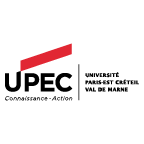
Université Paris-Est Créteil
UPEC is one of the major multidisciplinary and vocational universities within the Paris area.
With 19 sites and its main campus only 20 minutes from the heart of the French capital by subway, its serves a population of over 38,000 students.
A public university, UPEC enjoys governmental and European support. Its diverse partnerships with business organizations enhance its local presence while favoring career opportunities for its students.
In direct contact with its socioeconomic environment, UPEC successfully combines academic and scientific excellence in a spirit of openness.
A major player in the dissemination of academic, scientific and technological culture, UPEC offers over 350 training programs in all disciplines, from technical degrees to doctorates (PhD), including a series of degree programs entirely taught in English. The university is home to 7 faculties, 8 schools and institutes, 33 research centers and an Observatory of Sciences of the Universe.
HAL portal
Open Science Policy
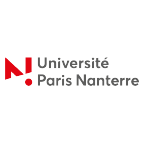
University Paris Nanterre
From its very creation in the 1960s, University Paris Nanterre has dedicated itself to being a new type of institution of higher education. An institution of learning and research whose defining characteristics are its vibrant campus life, educational innovation and scientific research with a social dimension. University Paris Nanterre is located to the west of the greater Paris area, just next to the largest business district in Europe and in a dynamic area full of major urban developments. The Nanterre campus reflects the University’s forward-looking policy with respect to sports and cultural activities, environmental commitment and solidarity actions. In addition to its main campus in Nanterre, the University also has satellite sites in nearby Saint-Cloud and La Défense.
Today University Paris Nanterre has 34,000 students in undergraduate, postgraduate and professional continuing education with more than 20% of the student body from a foreign country. There are over 1,000 research professors and researchers in all disciplines of social and human sciences (law, economics, management, arts, humanities and languages, philosophy, linguistics, information and communication sciences, psychology and education, history, archaeology, anthropology, sociology, geography) as well as in sports sciences and physical education, mathematics, computer science and engineering.
University Paris Nanterre is a member of an Association of Higher Education and Research Institutions known as Université Paris Lumières. The University of Paris 8 and the CNRS research institute also belong to this prestigious grouping of institutions of higher learning. The INS-HEA (special educational needs and disability studies) and ENS Louis Lumière (National Film, Photography & Sound Engineering School) as well as numerous cultural institutions of both French and international renown (Louvre Museum, National Library of France, Quai Branly Museum, Centre Georges Pompidou, National Archives, INA – National Audiovisual Institute, History and Immigration Museum, etc. ) are also part of this exceptional educational initiative. This association is one of the leading educational and research bodies in France in the field of social and human sciences.
HAL portal
Open Science policy
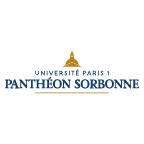
Université Paris 1 Panthéon-Sorbonne
At the heart of Paris Latin Quarter, the Université Paris 1 Panthéon-Sorbonne combines the glorious past of a college founded during the 13th century by Robert de Sorbon, with a pioneering multidisciplinary programme. Ever since 1970, its mission of education and research has been gravitating around three scientific domains: humanities and arts, law and political science, and economic and management sciences.
Established on 25 locations across Paris and Île-de-France, the Université Paris 1 Panthéon-Sorbonne guides over 43.000 students every year. The university is part of an international relations network all around the globe; it plays a major role in the education of researchers, professors, magistrates, lawyers, executives for the private sector or the public administration. Its moto: Omnibus sapientia, unicuique excellentia – Knowledge for all, excellence for every one.
With a 800 years history and 50 years of excellence, the Université Paris 1 Panthéon-Sorbonne is now the greatest university specialised in humanities and social sciences in France.
HAL portal
Open Science Policy
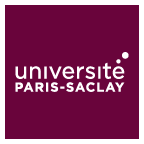
Université Paris-Saclay
Université Paris-Saclay offers a comprehensive and varied range of Undergraduate, Master’s and PhD degrees, renowned internationally thanks to the University’s reputation for research excellence and the commitment of its academic staff. The University’s constituent faculties, institutes and component institutions all contribute to the curricula with cutting-edge specialised courses in Science and Engineering, Life Sciences and Health, and Social Sciences and Humanities.
The University shares 275 laboratories with the French Alternative Energies and Atomic Energy Commission (CEA), the French National Centre for Scientific Research (CNRS), the Institut des Hautes Etudes Scientifiques (IHES), the French National Research Institute for Agriculture, Food and Environment (INRAE), the National Institute for Research in Digital Science and Technology (INRIA), the French National Institute of Health and Medical Research (INSERM) and the French Aerospace Lab (ONERA). Université Paris-Saclay currently represents 13% of France’s research potential.
Located in the south of Paris on vast sites that stretch across Paris, Orsay, Évry and Versailles, Université Paris-Saclay benefits from a strategic geographical and socio-economic position that is strengthened by its international visibility.
Université Paris-Saclay is nested in a protected natural area close to Paris, at the very heart of a dynamic economic hub.
With 48,000 students, 9,000 researchers and lecturers, and 11,000 technical and administrative staff members, Université Paris-Saclay is a driving force for the development of its local area and one of France’s leading institutions.
HAL portal
Open Science Policy
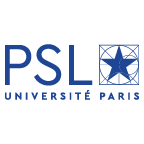
Université Paris Sciences & Lettres
Located in the heart of Paris, PSL (Paris Sciences & Lettres) combines excellence and diversity to inspire dialog among and between all areas of knowledge, innovation, and creativity in the Arts, Engineering, Sciences, Humanities and Social Science.
PSL’s academic community makes the best of its 140 laboratories to design ambitious, formative, innovative and cross-disciplinary research programs.
PSL is selective and committed to equal opportunity, PSL Université chooses students globally for their talents to offer them research-based education and guarantees a low student to teacher ratio as well as a rich campus life and exciting career paths.
With 2,900 researchers and 17,000 students, PSL’s strengths are comparable to those of the world’s top universities. As a university of manageable size, PSL readily produces actionable results (some 200 research projects and 100 new education programs have been launched since 2011), provides the ideal environment for interdisciplinarity, and prioritizes high student-faculty ratios.
Read more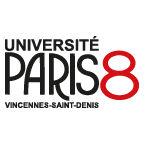
Université Paris 8 – Vincennes – Saint-Denis
Ever since its creation as an Experiment Centre in Vincennes in 1969, and its establishment in Saint-Denis later in 1980, Université Paris 8 has been a major education and research center for humanities in Île-de-France. With its specialities in Arts, Litterature, Humanities and Social Sciences, Université Paris 8 has always led its students towards a better understanding of today’s world, all the while giving them tools to integrate socially.
To this end, Université Paris 8 offers research perspectives in scientific fields little represented in French higher education and research: psychoanalysis, geopolitics, cinema, plastic arts, gender studies…
Paris 8 also stands out through the strong ties it maintains between research and education, thanks to educational methods adapting to each population and offering education to each and every one, at any age.
Read more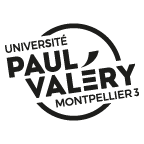
Paul-Valéry Montpellier 3 University
Located in woodland to the north of the city, Paul-Valéry Montpellier 3 University, Faculty of Letters, Arts, Languages, Human and Social Sciences, is named after Paul Valéry, the great writer from Sète. With a registered, labelled “20th century heritage site” campus, just 20 minutes from the city centre by tram, the University enjoys a vibrant setting where Mediterranean vegetation, abundant parkland and numerous works of art combine for the pleasure of students and campus users alike.
Montpellier University was France’s third university, established after Paris and Toulouse. Founded on 26th October 1289 by papal bull under Pope Nicholas IV, it included Faculties of Medicine, Arts and Law. In 1970, these former faculties became three separate Universities, including Paul-Valéry, Montpellier 3.
The university campus is evolving, expanding and transforming. Several projects are currently planned or underway, including a General Resources Building, a new Staff House, or the future “Learning Centre” or Atrium, with its bold architecture, a striking statement at the entrance to the campus.
Opened in 2017, the Saint-Charles site, looking out onto the city, is the University’s research showcase. The site hosts 19 interdisciplinary research teams, a Labex (Laboratory of Excellence), an ERC (European Research Council) programme, an IDEFI (Initiatives of excellence in innovative training) project, as well as Montpellier’s Maison des Sciences de l’Homme Sud.
HAL portal
open science policy
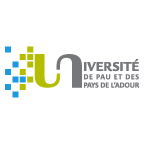
University of Pau and Pays de l’Adour
The University of Pau and Pays de l’Adour (UPPA) is a multidisciplinary university which covers three major areas of study:
- law, economics, business, management
- science and technology
- literature, languages, arts, social sciences and humanities and sport
UPPA offers its students initial or continuing education, work/study programmes or apprenticeships, to obtain Bachelor’s, Master’s and vocational degrees and Doctorates through its 5 UFRs (Teaching and Research units) and two Doctoral schools.
The university also includes two IUTs (University Institute of Technology), one IAE (University School of Management), two engineering schools (ENSGTI, covering industrial technology engineering and ISA BTP covering construction), a continuing education department and an apprenticeship training centre.
One of the particular features of UPPA is its location close to the Spanish border, between the mountains and the ocean, on 5 campuses on a very human scale: Anglet, Bayonne, Pau, Mont-de-Marsan and Tarbes.
The teaching teams at UPPA prepare 11,500 students to complete their course, but they are also attentive to the needs of students and are always available, and committed to our quality process.
With 24 research units associated with research bodies such as the CNRS, INRA and INRIA, research at UPPA covers :
- 5 strategic themes:
- Environment and materials
- Geo-resources
- Aquatic environments and resources
- Justice and territories
- Areas, borders and blending
- and one transversal and multidisciplinary theme: energy, environmental and social transitions.
- Institut Carnot ISIFoR (Institute for the sustainable engineering of fossil resources)
- Equipex MARSSEquipex MARSS (Mass Spectrometry centre for Reactivity and Speciation Sciences)
- Equipex in the XYLOFORESTXyloforest Programme network (development of the wood sector)
- Labex in the STORE-EX network (electrochemical storage of energy)
- LabCom, shared laboratory with URGO
Because of its geographic situation, UPPA is particularly well placed to develop original cross-border cooperation with Spain, by setting up:
- the PYREN Project: IDEFI (Initiative for excellence in innovative training) funded by “investment for the future” from the government,
- specific bursaries,
- internships in companies,
- 10 double degrees and joint thesis supervisions (34 in 2015).
UPPA hosts 1,700 international students and offers its own students the opportunity for international mobility through its many partnerships:
- 51 partner countries worldwide,
- 80 inter-university cooperation agreements,
- 179 Erasmus partner universities.
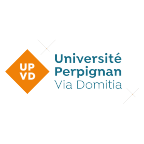
University of Perpignan
In 1350, the King of Aragon founded the University of Perpignan. Characterized by a multidisciplinary approach since its inception, this approach continues to define the University today, some 670 years later.
The University of Perpignan Via Domitia (UPVD) is modestly sized, local and multidisciplinary, and is open to Occitania, Southern Catalonia and to the International world. It is located in an ideal setting, at the centre of three metropolises: Montpellier, Toulouse and Barcelona.
The UPVD has converged its strengths and skills to create a collective dynamic adapted to the challenges of global change. As these changes bring about problems that can only be dealt with in a multidisciplinary manner, the UPVD benefits from undeniable assets and a particularly favourable regional, national and international context.
The academics and research at the University of Perpignan focus on Man within his environment, over a long time period (for 560,000 years, Tautavel) in order to adapt to new constraints, to support expected transitions and to propose future solutions. This work addresses the adaptation of plants to climate change as well as the effects induced in parasitology, the need to develop techniques for restoring fish stocks or the treatment of plastics at sea. Further, we are invested in the invention of the energies of tomorrow, the creation of future regulations to encourage greater sustainability and in the conceptualisation of an evolved concept of Man within his environment.
HAL portal
open science policy
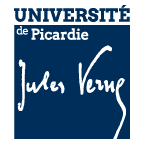
Université de Picardie – Jules Verne
The UPJV was created in 1969 as part of an unprecedented reform of French higher education (law of 12 November 1968). In the UPJV’s half century of existence, it has become a major player in the cultural, social and economic development of its territory. It has developed strong links with the local industrial base, which it stimulates through its innovative research activities, but also through the training of highly qualified executives.
The level of excellence of its collaborative and creative research, and its delocalised diplomas, allow it to shine beyond the Hauts-de-France region, in France and internationally. Attached to the values of humanism and the sharing of knowledge, the UPJV is a regional university open to the world, committed for more than 50 years to the service of people and society!
Read more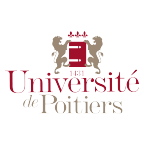
University of Poitiers
The University of Poitiers is symbiotically rooted in its region, getting as close as possible to institutional, economic, cultural and academic actors.
The University of Poitiers is located mainly in Greater Poitiers, on the campuses of central Poitiers, Poitiers-East and Futuroscope. It has also developed campuses in Niort and Angoulême, where it offers undergraduate (including the 2-year DUT diplomas) and postgraduate studies. It also has sites in Châtellerault and Segonzac.
With five main fields of training, the University of Poitiers offers, within the same institution, courses in all disciplines and at all levels, from 2-year diplomas to PhDs. There are no other higher education structures, besides universities, that offer such a wide range.
Some professions are only accessible through specialized schools, but we provide training that can be one of the gateways to such specific schools.
The major fields of training at the University of Poitiers:
- Legal, economic and management sciences
- Life, sports and health sciences
- Science and technology
- Humanities, Literature, Languages and Arts
- Teaching and Education Sciences
HAL portal
Open science policy
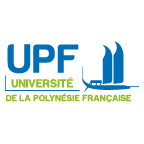
Université de la Polynésie française
Université de la Polynésie française has several missions:
Formal and lifelong education through a diverse range of national or university diplomas.
Scientific and technical research, as well as the promotion of its results:
- 5 laboratories, including a mixt research unit
- Contribution to scientific and technical development along with research organisation, French state and French Polynesia
- Study and use of polynesian landmarks
Integration into the world of work for students:
- Centre for orientation, internships and occupational integration
- Professionalisation of the training
- Higher education orientation days
- Job fair
- Les Doctoriales, Ma thèse en 180 secondes
Promotion of scientific culture and scientific and technical information:
- Organisation of international symposiums
- Publications by university lecturers and researchers
- Series of lectures Savoirs pour tous
- University library, Fonds polynésien
International cooperation:
- Hosting of foreign students, inter-universities staff exchange
- Erasmus (mobility in the European Union)
- Agreements with universities in the Pacific area
- Assistance for French people abroad
HAL portal
Open science policy
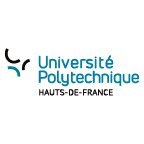
Université Polytechnique des Hauts-de-France
Université Polytechnique des Hauts-de-France stems from the evolution of Université de Valenciennes et du Hainaut-Cambrésis.
In 2016, leaning on the multi-disciplinarity of the institution (except for health studies), Professor Abdelhakim Artiba, University chairman, united the university community on a unique projet in France: a polytechnical university. In Septemer 2019, France state created the Université Polytechnique des Hauts-de-France through a decree, and approved its statutes of Experimental institution.
Nowadays, the institution offers 160 trainings, divided up in 3 composing institutions:
- Institut National des Sciences Appliquées (INSA) Hauts-de-France
- Ecole Supérieure d’Art et de Design de Valenciennes
- Ecole Supérieure d’Art de Cambrai.
and 2 components:
- Institut Universitaire de Technologie (IUT)
- Institut Sociétés et Humanités.
Research at Université Polytechnique Hauts-de-France relies on 8 laboratories:
- LAMIH : Laboratoire d’Automatique, de Mécanique, d’Informatique Industrielles et Humaines
- LMCPA : Laboratoire des Matériaux Céramiques et Procédés Associés
- IEMN DOAE : Ultrasons, télécommunications, micro-systèmes acoustiques, électronique
- LAMAV : Laboratoire des Mathématiques et ses applications
- DeVisU : Information – communication / Design, Visuel, Urbain
- DeScripto : Cultures, arts, littératures, histoire, imaginaires, sociétés, territoires, environnement
- CRISS : Centre de Recherche Interdisciplinaire en Sciences de la Société
- LMI : Laboratoire de Mathématiques pour l’Ingénieur.
and 3 axis:
- Transportation, Mobility and Smart, safe and sustainable urbanism
- Engineering for health, disability and silver autonomy
- Creation: Sciences, Arts and Industries (conception, writing, imaginaries, representations).
HAL portal
Open Science Policy
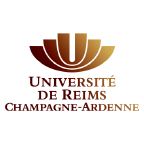
URCA
This multidisciplinary university (URCA) develops innovative, fundamental and applied research. It provides more than 25 000 students with a wide initial undergraduate studies program which corresponds to society’s needs in all domains of the knowledge. The university also accompanies independent or company backed students in continuing professional development training.
Fulfilling students’ needs is a top priority and URCA developed the student citizenship through the evaluation of its formations and is equipped with a student-services desk uniquely devoted to providing new students with information, a help desk to help students get employment placement and a follow-up evaluation.
URCA is situated in five different cities: Reims (main site), Troyes, Charleville-Mézières, Châlons en Champagne and Chaumont. The university largely contributes to the development of Champagne-Ardenne through its partnerships with local and national companies and the regional authorities. With 1557 teachers and teachers-researchers among whom 126 are hospital practitioners as well as a technical and administrative staff of 1038, URCA is one of the biggest employers of the region.
URCA aims to appeal to international students and has consequently introduced the construction of an interregional and international cluster (PRES) which will include the main institutions of higher education of Champagne-Ardenne and Picardie, and Walloon universities.
Situated in the heart of the Ile-de-France, the Rhineland, Northern Europe and Italy, URCA occupies a geostrategic position which is favorable to European and international exchanges. The fact that the TGV is accessible in the Roissy airport facilitates transportation to the university which is only ten minutes away.
By choosing the University of Reims Champagne-Ardenne as an institution of higher education one opts for quality education and innovative fundamental and applied research. In addition, the size of the university contributes to the success of the students by offering a working environment convenient to achieving success and which encourages international mobility.
HAL portal: https://hal.univ-reims.fr/
Read more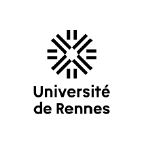
Université de Rennes
The University of Rennes brings together training departments (UFR, faculties, schools, institutes), research centres and five Grandes Écoles who participate in the development and implementation of the strategy of the University of Rennes: École des Hautes Études en Santé Publique (EHESP), École Nationale Supérieure de Chimie de Rennes (ENSCR), École Normale Supérieure de Rennes (ENS Rennes), Institut National des Sciences Appliquées de Rennes (INSA Rennes), Sciences Po Rennes.
The University of Rennes also works in association with the Université Rennes 2, the École Nationale de Statistique et Analyse de l’Information de Rennes (ENSAI) and the Institut Agro Rennes-Angers to pursue and develop joint projects.
National research organisations – CNRS, INRAE, Inria, Inserm – and the university hospital, the CHU de Rennes, participate as partners in the development and implementation of the scientific strategy of the University of Rennes.
- A New Multidisciplinary Institution with a Public Service Mission of Higher Education and Research.
- Research: developing intensive research to serve society, encouraging open science and stimulating innovation and transfer.
- Training: advancing and transmitting knowledge by transcending disciplinary boundaries, and through pedagogical innovation and diversification of pathways.
- Student experience: creating the conditions for a quality student experience, promoting the success and fulfilling professional integration of students.
- CSR: contributing to the Sustainable Development Goals, and especially to the well-being of students, staff and stakeholders.
- International: cooperating internationally and participating in the development of the European Higher Education and Research Area.
HAL portal
Open Science Policy
Read more
Rennes 2 University
Rennes 2 University is the largest centre for research and higher education in the fields of human and social sciences in western France.
As one of the major public universities in France almost exclusively devoted to arts, humanities and social sciences, Rennes 2 strives to provide excellence through education and innovation within a dynamic learning environment. Our university welcomes more than 24,000 students to its 5 different faculties:
- Arts, Literature, and Communication
- Modern Languages
- Human Sciences
- Social Sciences
- Sports Sciences
Rennes 2 main campus is located in the heart of the city Rennes, the capital of picturesque Brittany. The university helps contribute to regional and national dynamism through the variety of our educational offer, research and cultural vitality. Rennes itself is the 8th largest student city in France, with more than 60,000 students.
While fostering local cooperation has always been a part of Rennes 2’s DNA, it also has an increasingly global perspective. With over 3,000 international students and 265 partners worldwide, the students and staff are now, more than ever, creating strong relationships with university and research institutions around the globe.
Rennes 2 students also benefit from an exceptional and diversified linguistic offer of 19 foreign languages. Rennes 2 is also home to the premier French-language learning center – the CIREFE.
HAL portal: https://hal.univ-rennes2.fr/
Read more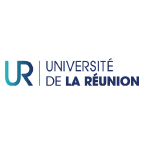
University of Reunion Island
The University of Reunion Island is a French public higher education and research institution, located in the heart of the Indian Ocean, one of Europe’s outermost regions. By virtue of its unique geostrategic position it is the only European university in the region.
15 000 students are admitted every year at six sites in St Denis (Moufia, Victoire, Bellepierre and the University Technology Park), Le Tampon and Saint Pierre.
Through its research, international influence, range of courses on offer and student living conditions, the University of Reunion Island has many advantages that enable it to play a key role as an interface between Europe and the Indian Ocean.
The University of Reunion Island offers a whole range of full-time and vocational multi-disciplinary and diversified curricula:
- European standard-compliant LMD (Bachelor, Master, PhD) degrees in three fields “Arts & Social Sciences”, “Law, Economics and Management”, “Science, Technology & Health”;
- job-oriented courses (vocational Bachelor’s degree, undergraduate technology degrees, etc.) in widely different fields such as Civil Engineering, Air Conditioning, Banking & Insurance or Networks & Telecommunications;
- engineering degrees in three domains “Innovation & Integrated Agri-Food Development”, “Telecommunication, Computer and Multimedia Services”, “Sustainable Construction & Environment”.
The University of Reunion Island is composed of 5 Faculties, 3 Institutes, 1 Engineering School, 1 Teacher Training School, 1 Observatory of the Sciences of the Universe, 1 Training Centre and 1 Language Centre:
- Faculty of Law and Economics
- Faculty of Sciences and Technology
- Faculty of Arts and Social Sciences
- Faculty of Human Sciences and Environment
- Faculty of Health
- Institute of Business Administration
- University Institute of Technology
- Teacher Training School
- Engineering School
- Observatory of the Sciences of the Universe
- Confucius Institute
- Training Centre
- Language Centre
The University of Reunion Island houses 21 research labs.
Read more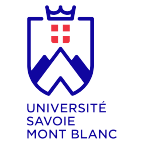
University Savoie Mont Blanc
With 15,000 students, a academics rich and multidisciplinary offer of and 19 laboratories of research Internationally recognized, the University Savoie Mont Blanc (Chambéry) is an establishment on a human scale that combines proximity to its territories and a wide opening on Europe and the world.
Between Geneva, Turin, Lyon and Grenoble, on the borders of Switzerland and Italy, with the unfailing support of the communities that gave birth to it, it is a territorial, regional and cross-border player, a major player in social, economic and cultural development.
The research is run by recognised, labelled and distinguished laboratories that are involved in close partnerships with major organisations (CNRS, CEA, INRA), international organisations (CERN) or other structures (INES, Institut de la Montagne) that are also at the cutting edge of innovation. Our researchers are strongly involved in a few fields that accompany territorial dynamics: mountains, mechatronics, the organisation, tourism, image and energy sectors. Together with physics, they contribute to the visibility of the Université Savoie Mont Blanc in niches where its reputation is internationally recognized.
Read more
Université Sorbonne Nouvelle
Founded in 1970, Université Sorbonne Nouvelle stems from the former Litterature faculty of University of Paris.
At the heart of Latin Quarter, and through Paris 5th arrondissement, Sorbonne Nouvelle offers several multidisciplinary high level education in Languages, Litterature, Arts and Media, Humanities and Social Sciences.
These trainings offer a variety of job prospects: teaching, research, publishing, resource management, performing arts (comedy, cinema, audiovisual), communication, journalism, coordination of cultural projects, translation and interpretation, in Europe or worldwide. Education at Sorbonne Nouvelle also relies on reputed research in modern humanities.
HAL portal
Open Science policy
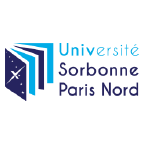
Sorbonne Paris Nord University
Paris University 13 is one of the thirteen universities that were created after the reorganization of the old Sorbonne after 1968.
It now has 24,000 students, spread across five campuses pursuing degrees or continuing education.
Truly multi-disciplinary in nature, Paris University 13 is a major center of teaching and research in the north of Paris.
The fundamental mission of Paris University 13 is to improve the scientific, cultural and professional knowledge of all through initial and continuing education and the development of research, which is its essential foundation.
In accordance with this mission, Paris University 13 pursues the following objectives :
- To welcome, inform and guide the choices of its students and provide them with initial and/or continuing education, particularly so that they obtain degrees.
- To develop research in science and technology as well as spread and extract value from findings
- To support students in their choice of courses and their entry into working life
- To support all desirable form of relations within the regional environment
- To enrich the culture and the scientific and technical knowledge of the academic community and the regional population
- To promote cooperation with other universities both nationally and internationally, particularly by participating in the European Higher Education Area
HAL portal
Open Science Policy